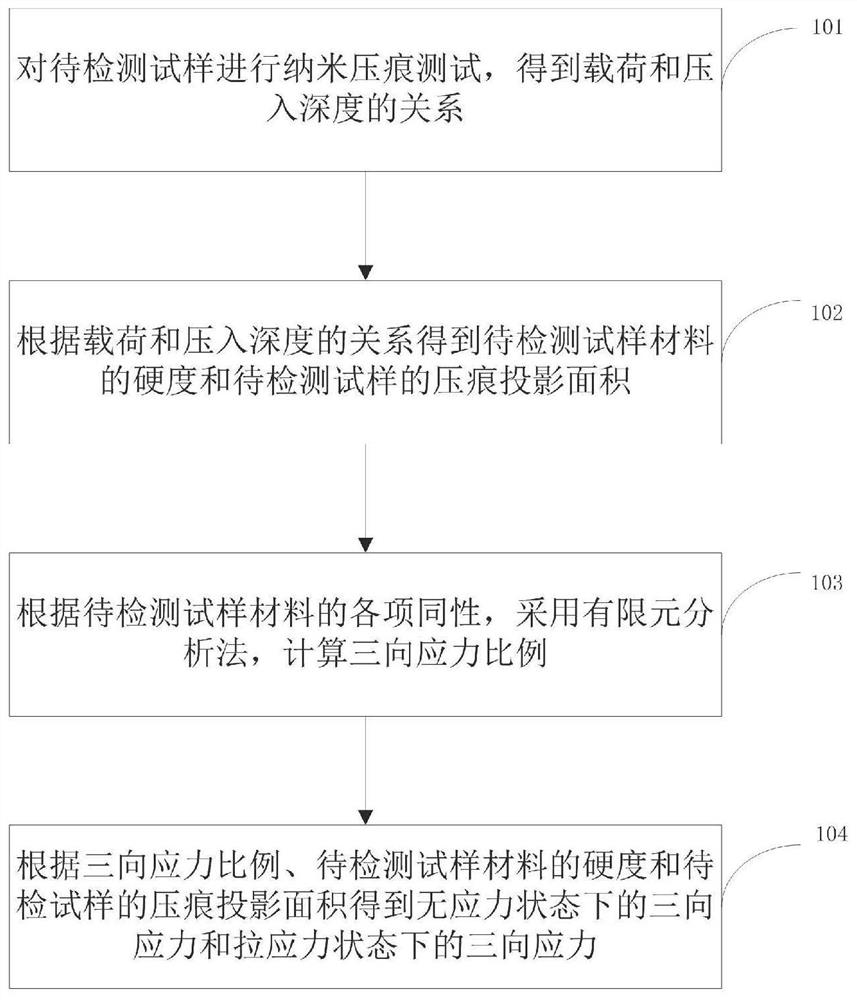Method and system for testing three-dimensional stress of residual stress of material by utilizing nanoindentation method
A three-dimensional stress and nano-indentation technology, which is applied in the directions of testing material hardness, analyzing materials, and measuring force components, can solve the problem that the three-dimensional stress state is difficult to directly test, and testing methods such as neutron diffraction and X-ray methods are difficult to directly measure. Test and other issues
- Summary
- Abstract
- Description
- Claims
- Application Information
AI Technical Summary
Problems solved by technology
Method used
Image
Examples
Embodiment Construction
[0055] The technical solutions in the embodiments of the present invention will be clearly and completely described below in conjunction with the accompanying drawings in the embodiments of the present invention. Apparently, the described embodiments are only some of the embodiments of the present invention, not all of them. Based on the embodiments of the present invention, all other embodiments obtained by persons of ordinary skill in the art without making creative efforts all belong to the protection scope of the present invention.
[0056] The object of the present invention is to provide a method and system for testing the three-dimensional stress of material residual stress by using the nano-indentation method, so as to realize the detection of the three-dimensional residual stress in the test micro-region.
[0057] In order to make the above objects, features and advantages of the present invention more comprehensible, the present invention will be further described in ...
PUM
 Login to View More
Login to View More Abstract
Description
Claims
Application Information
 Login to View More
Login to View More - R&D
- Intellectual Property
- Life Sciences
- Materials
- Tech Scout
- Unparalleled Data Quality
- Higher Quality Content
- 60% Fewer Hallucinations
Browse by: Latest US Patents, China's latest patents, Technical Efficacy Thesaurus, Application Domain, Technology Topic, Popular Technical Reports.
© 2025 PatSnap. All rights reserved.Legal|Privacy policy|Modern Slavery Act Transparency Statement|Sitemap|About US| Contact US: help@patsnap.com



